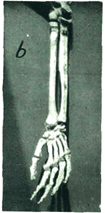The Radio-Ulnar Joint and forearm Rotation
The radio-ulnar joint plays a pivotal role in forearm rotation, particularly in the context of piano technique. This joint, comprising the proximal and distal articulations between the radius and ulna, facilitates two primary movements: pronation and supination. These movements are essential for the effective and nuanced control required in piano playing. In pronation, the radius rotates over the ulna, turning the hand so that the palm faces downwards. Conversely, in supination, the radius and ulna are parallel, resulting in the palm facing upwards. This rotational ability is crucial for pianists, allowing for a range of motions necessary to execute various musical articulations and techniques.
For instance, during scale passages or arpeggios, the smooth transition between pronation and supination aids in the seamless transfer of motion from one finger to the next, ensuring fluidity and reducing muscular tension. Furthermore, forearm rotation contributes to the control of dynamics and articulation, enabling pianists to produce a wide spectrum of sound qualities and intensities. It is also significant in preventing injury. Proper use of the radio-ulnar joint allows for a distribution of muscular effort and reduces overreliance on smaller muscle groups in the hand and fingers, which can be prone to strain and fatigue. Mastery of this aspect of forearm movement is thus not only a technical requirement for advanced piano playing but also a preventative measure against common repetitive strain injuries.
In summary, the radio-ulnar joint is integral to advanced piano technique, enabling essential forearm rotations that contribute to musical expressiveness, technical efficiency, and injury prevention. Mastery of its use is a key component in the development of a refined and sustainable piano technique.
For instance, during scale passages or arpeggios, the smooth transition between pronation and supination aids in the seamless transfer of motion from one finger to the next, ensuring fluidity and reducing muscular tension. Furthermore, forearm rotation contributes to the control of dynamics and articulation, enabling pianists to produce a wide spectrum of sound qualities and intensities. It is also significant in preventing injury. Proper use of the radio-ulnar joint allows for a distribution of muscular effort and reduces overreliance on smaller muscle groups in the hand and fingers, which can be prone to strain and fatigue. Mastery of this aspect of forearm movement is thus not only a technical requirement for advanced piano playing but also a preventative measure against common repetitive strain injuries.
In summary, the radio-ulnar joint is integral to advanced piano technique, enabling essential forearm rotations that contribute to musical expressiveness, technical efficiency, and injury prevention. Mastery of its use is a key component in the development of a refined and sustainable piano technique.
Articulation formed by the two bones of the Forearm
The radio-ulnar joint is the articulation formed by the two bones of the fore-arm.
The upper radio-ulnar joint (situated in the region of the elbow but distinct from the elbow-joint), is a modified ball-and-socket joint[1] which permits a turning of the forearm and hand palm-upward (supination) and palm-downward (pronation). This effect is produced by turning the radius (the shorter of the two bones of the fore-arm) upon its longitudinal axis [2]. When the arm hangs at the side of the body with the thumb of the hand forward (or palm upward when the fore-arm is horizontal), the two bones lie side by side, (see Fig. 7b below). In pronation, for example, when the hand is held in the normal hand-position of piano technique (Fig. 7a), the radius crosses diagonally over the ulna. The ulna cannot rotate and serves, with its connection to the large bone of the upper arm, to give the whole arm its continuity. Without the radio-ulnar joint, fore-arm rotation, upon which the important pianistic motions used in tremolo figures depend, would not be possible with any amount of freedom. Rotation could then come only from the shoulder; and it is this shoulder rotation, and not the fore-arm rotation, that explains the apparent rotary movement of the ulna in a direction opposite to that of the radius.
Axis of Forearm Rotation
The axis of forearm rotation extends through the head of the ulna in a line with the fourth finger of the extended hand, not the third finger.
Forearm rotation normally takes place through an arc varying from 150 degrees to 170 degrees. Rotation beyond these limits results from the added 90 degrees humerus-rotation at the shoulder joint. Complete forearm rotation, therefore, if we include the coordination with the shoulder, can be extended through 260 degrees or nearly (3/4) three-fourths of a complete rotation.
Forearm rotation normally takes place through an arc varying from 150 degrees to 170 degrees. Rotation beyond these limits results from the added 90 degrees humerus-rotation at the shoulder joint. Complete forearm rotation, therefore, if we include the coordination with the shoulder, can be extended through 260 degrees or nearly (3/4) three-fourths of a complete rotation.


The forearm, showing positions of radius and ulna in pronation (a) and supination (b).
[1]ball-and-socket joint: Ball-and-socket joint (also called spheroidal joint), in vertebrate anatomy, is a joint in which the rounded surface of a bone moves within a depression on another bone, allowing greater freedom of movement than any other kind of joint.
[2]longitudinal axis: The long axis of an object or structure; specifically an axis running the length of a craft or vehicle through its centre of gravity.